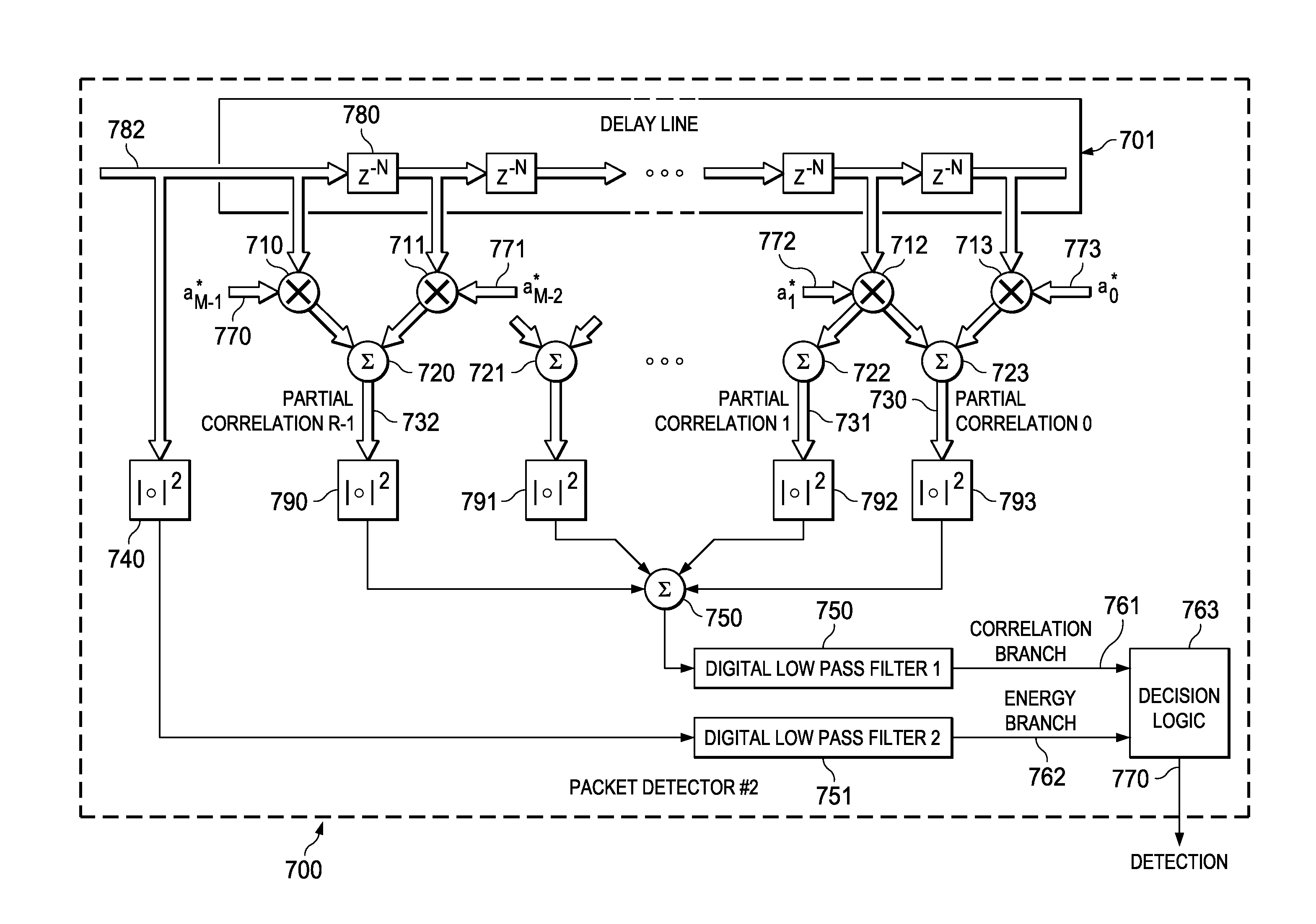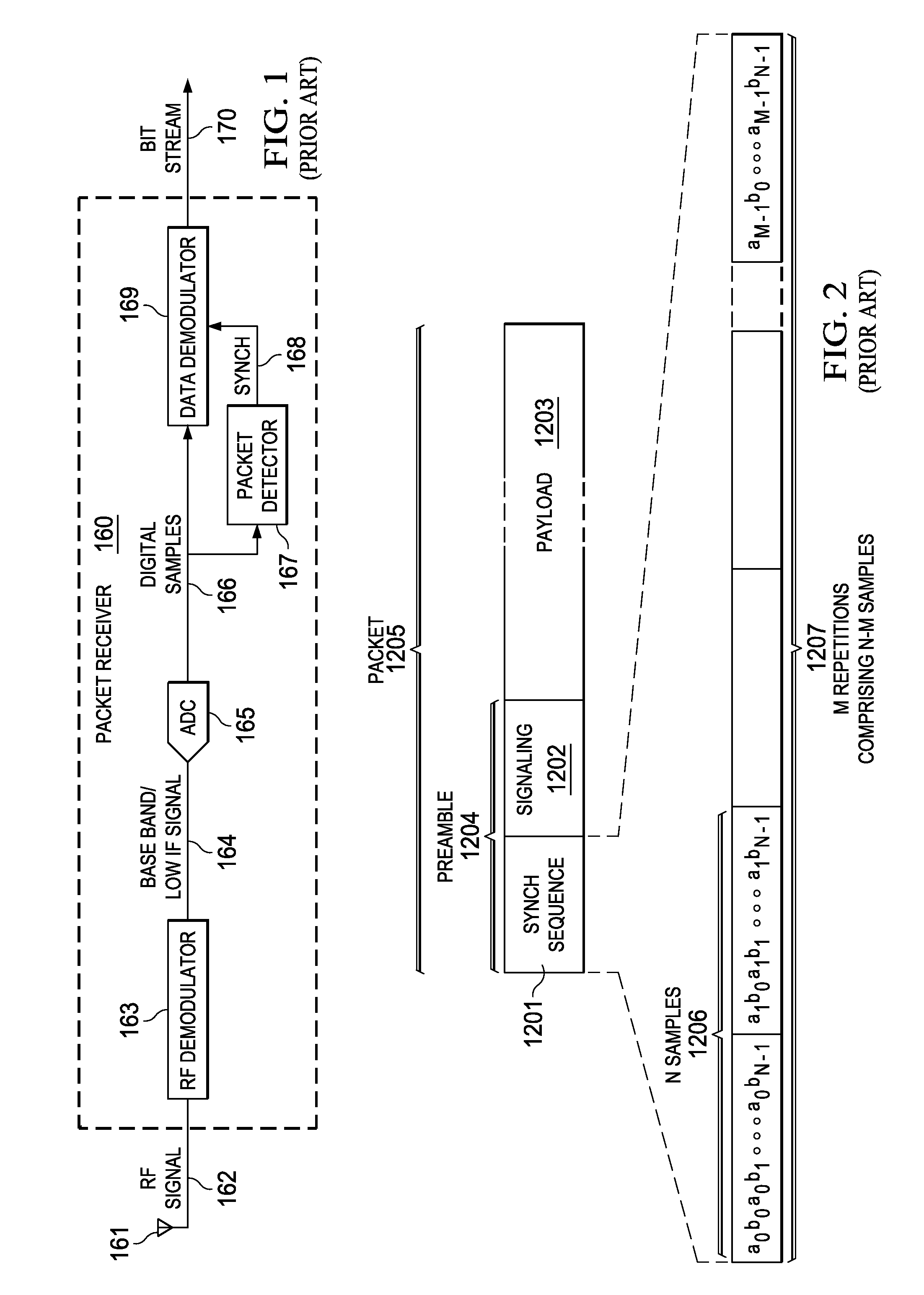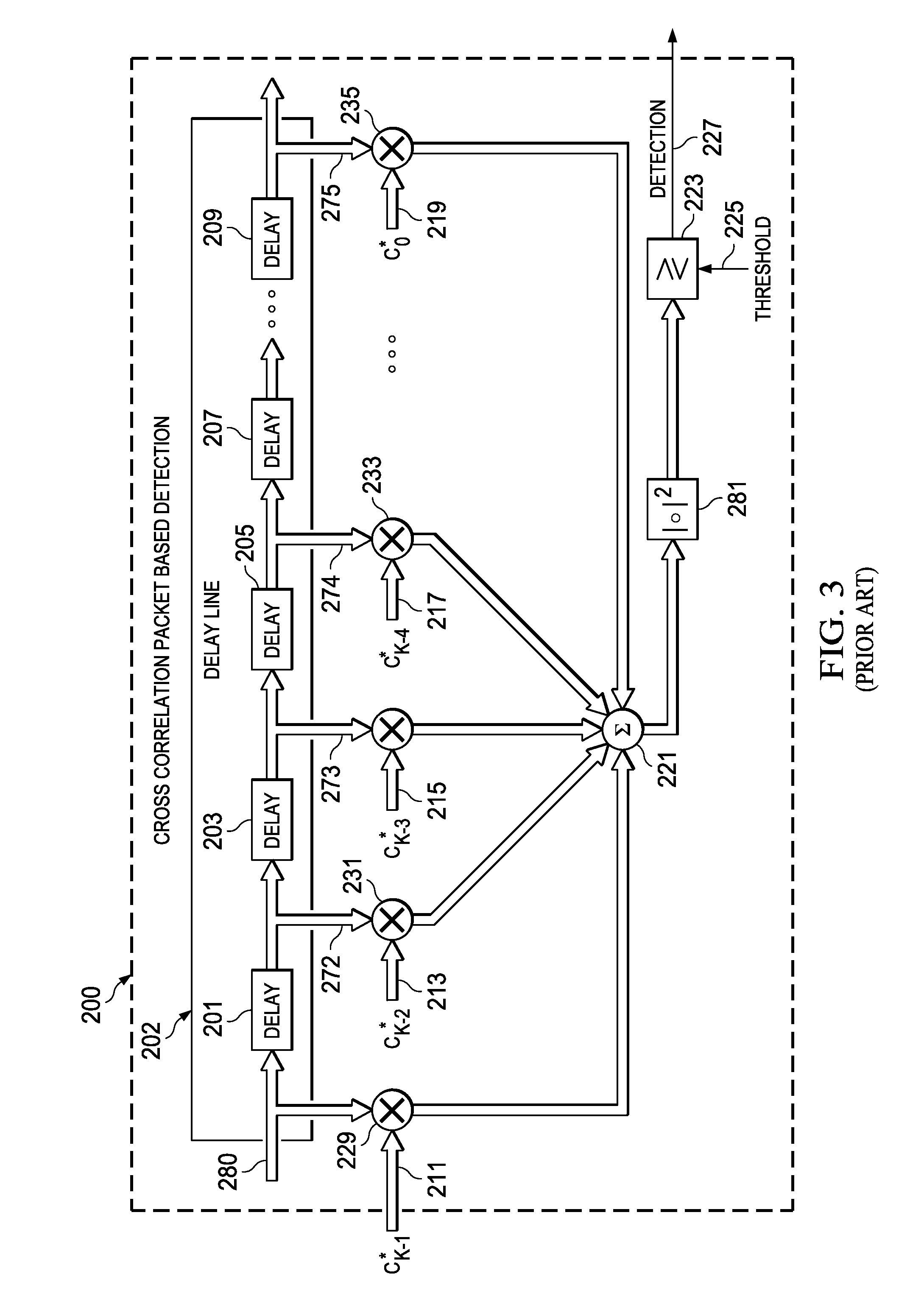Apparatus for and method of robust packet detection and frequency offset estimation
a packet detection and frequency offset estimation technology, applied in the field of data communication, can solve the problems of high miss detection probability (i.e. false alarms), corresponding increase in the probability of false alarms, and prior art cross correlation detection scheme is not very robust to channels, so as to maintain immunity, robustness to multipath channels, and robustness to carrier frequency offsets
- Summary
- Abstract
- Description
- Claims
- Application Information
AI Technical Summary
Benefits of technology
Problems solved by technology
Method used
Image
Examples
second embodiment
[0073]In operation, the input signal sample stream is delayed using delay line 701. Please note that in this second embodiment, the delay line atomic delay comprises N samples, where N is equal to the signal period. The delayed version of the signal samples are then multiplied by the flipped version of the spread sequence aM−1*, aM−2*, . . . a1*, a0* 1770, 1771, 1772, 1773, respectively. R partial correlation signals are then generated via summers 720, 721, 722, 723. Each partial correlation value undergoes a square magnitude operation via blocks 790, 791, 792, 793. The output of these square magnitude blocks are then summed together using summer 750. The signal then undergoes digital low pass filtering via block 750 in order to smooth out signal transients and noise effects. The output of the filtering stage is the correlation branch signal 761.
[0074]An energy branch signal 762 is generated by taking the input signal samples 782 and passing them through a square magnitude operation...
third embodiment
[0082]A block diagram illustrating a carrier frequency offset estimation circuit using the packet detection mechanism of the present invention is shown in FIG. 10. The packet detector, generally referenced 900, comprises delay line 901 comprising a plurality of delay elements 980, a first plurality of multipliers 902, 903, 904, 905, a plurality of summers 920, 921, 922, 923, a second plurality of multipliers 930, 931, 932, summer 950, digital low pass filter #1951 and angle detector 952.
[0083]In operation, the input signal sample stream 982 undergoes a delay line 901, whose atomic delay is the reference signal period N. The delayed signal samples are multiplied using a plurality of multipliers 902, 903, 904, 905 with the conjugated flipped version of the delayed signal aM−1*, aM−2*, . . . a1*, a0* 910, 911, 912, 913, respectively. Various combinations of the delayed signal samples multiplied by the reference signal samples are summed together via summers 920, 921, 922, 923. Pairs of...
PUM
 Login to View More
Login to View More Abstract
Description
Claims
Application Information
 Login to View More
Login to View More - R&D
- Intellectual Property
- Life Sciences
- Materials
- Tech Scout
- Unparalleled Data Quality
- Higher Quality Content
- 60% Fewer Hallucinations
Browse by: Latest US Patents, China's latest patents, Technical Efficacy Thesaurus, Application Domain, Technology Topic, Popular Technical Reports.
© 2025 PatSnap. All rights reserved.Legal|Privacy policy|Modern Slavery Act Transparency Statement|Sitemap|About US| Contact US: help@patsnap.com



